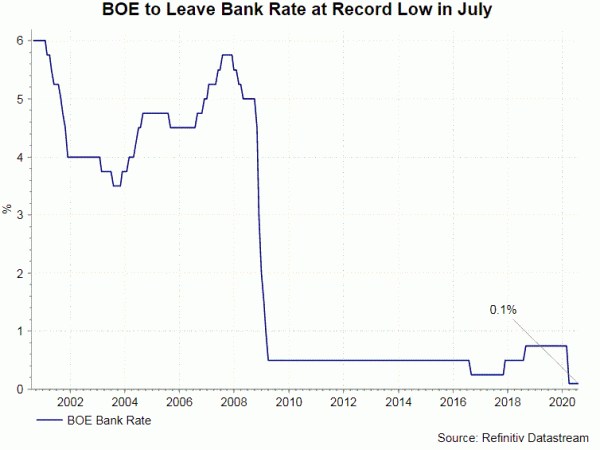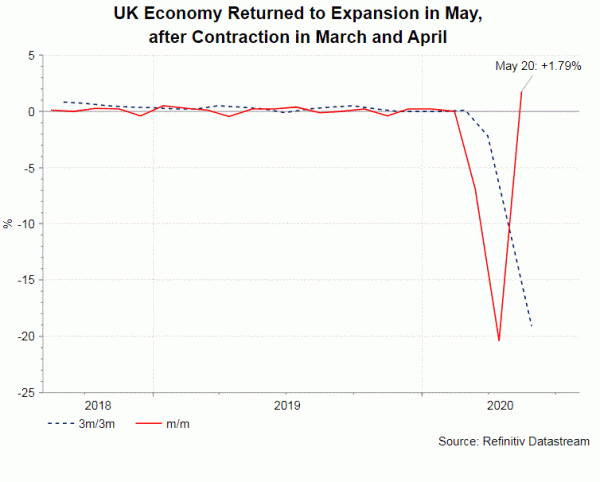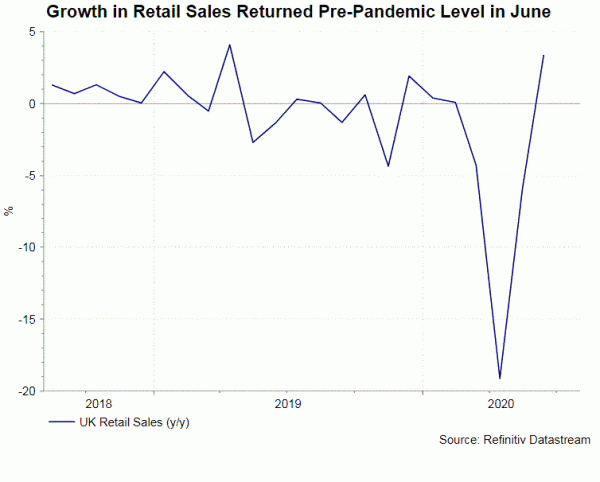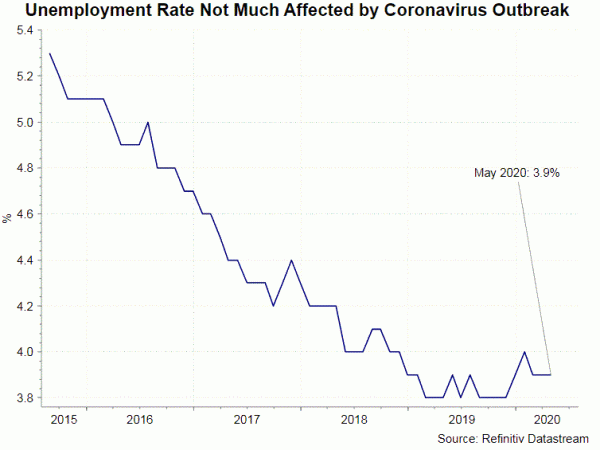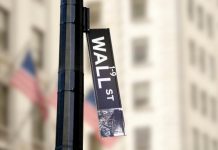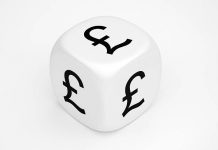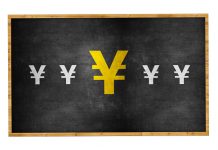BOE is widely anticipated to leave the Bank rate unchanged at record low of 0.1% this week. The asset purchase program (QE) will also be maintained at 745B pound. Of most interest in the meeting are the updated economic assessments, discussions on the effective lower bound (ELB) and negative interest rates, and future path of QE. We expect the central bank will eventually lower the ELB and expand the size of QE. Yet, these will be announced “around the turn of the year”. We expect the announcement will be made in November when BOE published its updated quarterly policy report.
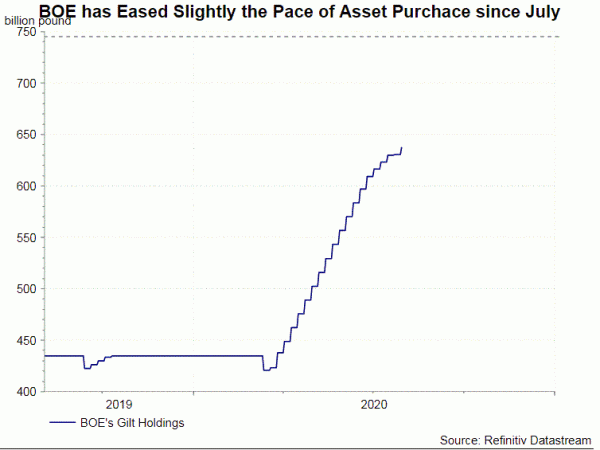 Economic data released since the June meeting indicate that economic damage brought about by the coronavirus pandemic is not as severe as previously expected. In the “illustrative scenario” for the economic outlook, BOE suggested that GDP would decline -14% y/y this year, driven by a -25% contraction in 2Q20. Growth is expected to rebound to xx% in 2021 and +3% in 2022. BOE also projected that the unemployment rate would rise to 8% in 2020, before dropping to 7% and 4% in 2021 and 2022, respectively. Concerning inflation, headline CPI is expected to fall further below the 2% target in 2H20.
Economic data released since the June meeting indicate that economic damage brought about by the coronavirus pandemic is not as severe as previously expected. In the “illustrative scenario” for the economic outlook, BOE suggested that GDP would decline -14% y/y this year, driven by a -25% contraction in 2Q20. Growth is expected to rebound to xx% in 2021 and +3% in 2022. BOE also projected that the unemployment rate would rise to 8% in 2020, before dropping to 7% and 4% in 2021 and 2022, respectively. Concerning inflation, headline CPI is expected to fall further below the 2% target in 2H20.
GDP grew +1.8% m/m in May, following a sharp fall of -20.3% a month ago. From a year ago, the economy plunged -24%, easing from -25.3% in April. Meanwhile, household consumption has shown signs of pick up. Retail sales jumped +13.9% m/m in June, accelerating from +12.3% in May. This also beat consensus of a +8% growth. Better-than-expected consumption might lead to a less-than-expected GDP contraction in 2Q20. Speaking before the Treasury Select Committee in mid-June, Chief Economist Andy Haldane suggested that UK’s economy is “on track for a quick recovery” – the so called V-shaped recovery. As he suggested, “roughly half of the roughly 25% fall in activity during March and April has been clawed back over the period since”.
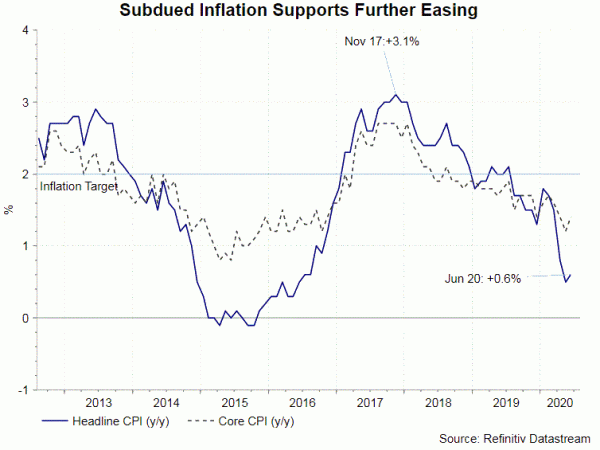 Other members are less certain, though. BOE Governor Andrew Bailey acknowledged that the economy is starting to recover from April’s lockdown, with activity resuming “quite strongly” in the housing and car markets. He stressed that the rebound had been uneven so far. He also warned that a surge in the unemployment level is biggest threat to recovery. Meanwhile, external members Silvana Tenreyro suggested noted that the country’s recovery would take the shape of an “incomplete V”. Against this backdrop, BOE could possibly upgrade near-term economic outlook from May’s forecasts, while downgrade the outlook in the medium term to reflect ongoing uncertainty.
Other members are less certain, though. BOE Governor Andrew Bailey acknowledged that the economy is starting to recover from April’s lockdown, with activity resuming “quite strongly” in the housing and car markets. He stressed that the rebound had been uneven so far. He also warned that a surge in the unemployment level is biggest threat to recovery. Meanwhile, external members Silvana Tenreyro suggested noted that the country’s recovery would take the shape of an “incomplete V”. Against this backdrop, BOE could possibly upgrade near-term economic outlook from May’s forecasts, while downgrade the outlook in the medium term to reflect ongoing uncertainty.
As the coronavirus outbreak hit the UK in March, BOE rapidly cut the Bank rate rapidly to a record low of 0.1%, the current effective lower bound (ELB) of the central bank’s policy rate. Policymakers will be concluding the review ELB adjustment in coming months. We believe the central bank will likely lower the ELB. This move would be consistent with its notion of not ruling out negative interest rates. We expect more hints about the issue this week. On asset purchases, BOE will maintain the size at 745B pound this month. In June, BOE increased the size by 100B pound until end of the year. We notice the central bank has tapered purchases to below 7B pound weekly in July, from over 10B pound from April to June. We do not interpret this as a sign of tightening. Rather, we believe that BOE attempts to preserve the current envelope of asset purchases until November, when the announcement of QE expansion is made.




